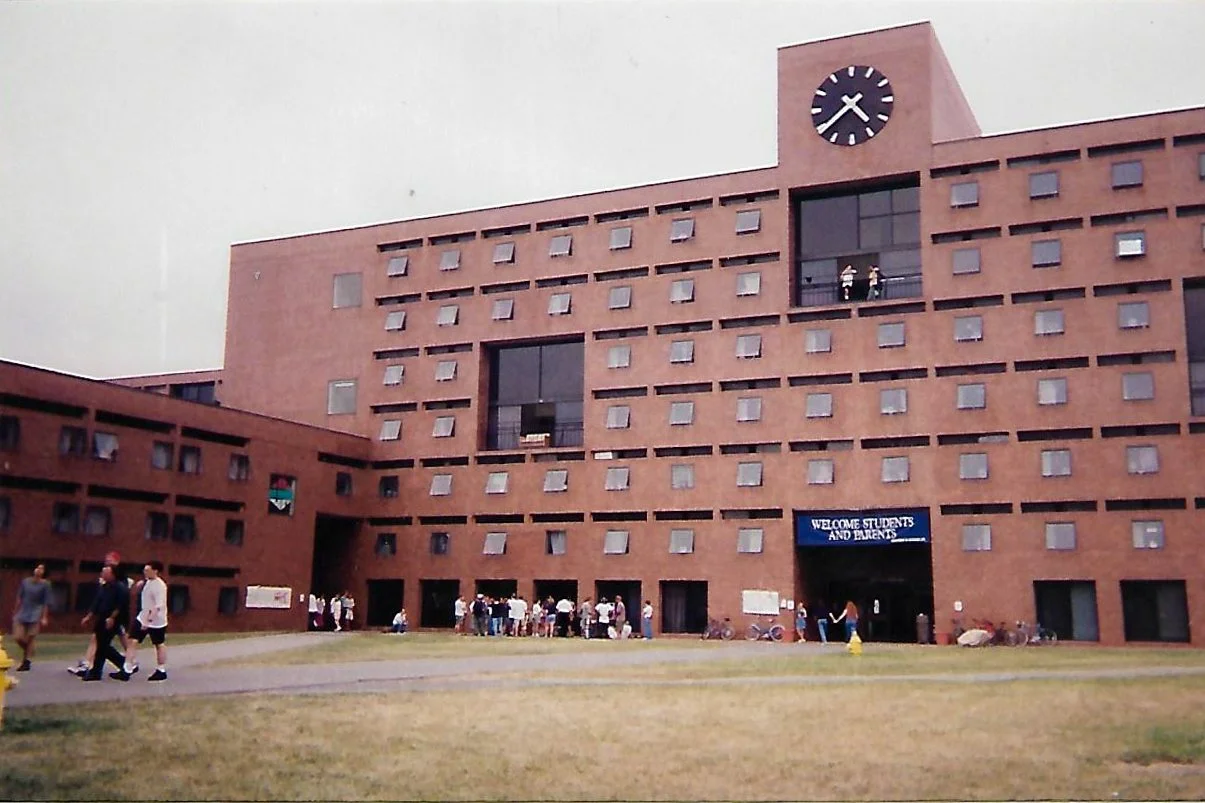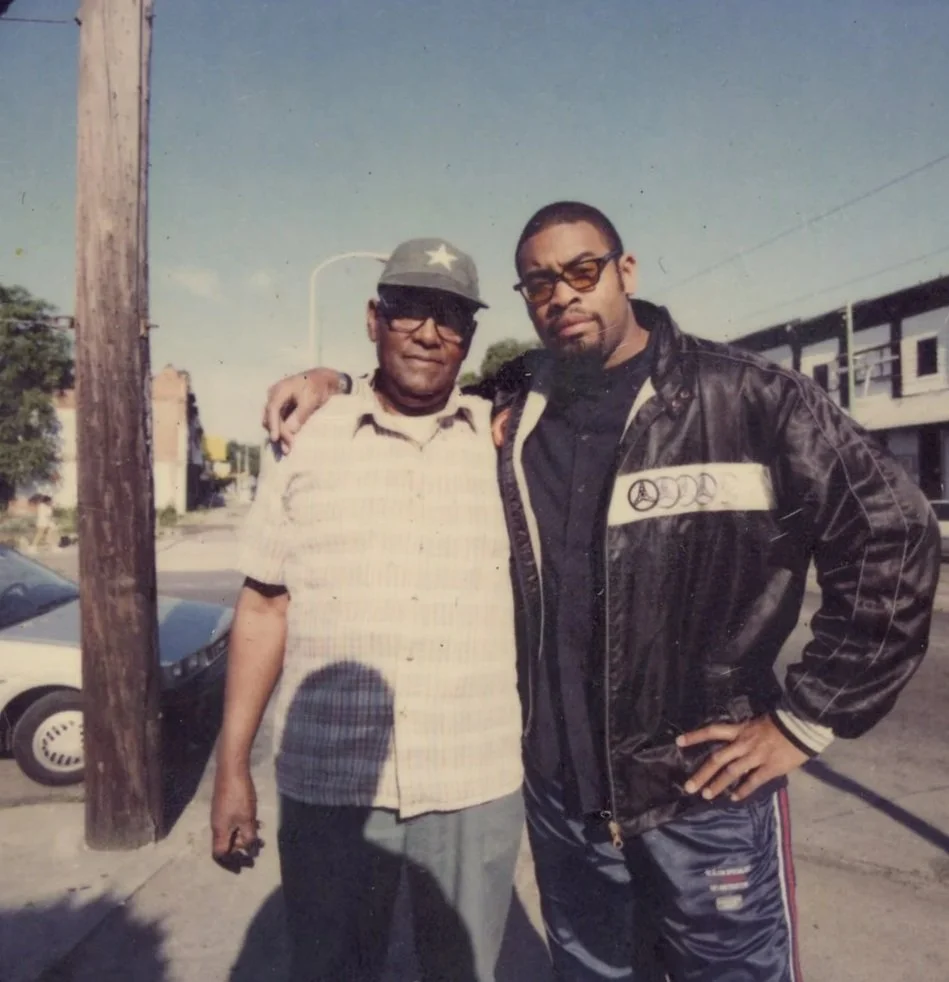1995-2000
EXPOSURE: The Learning Years
After graduating high school, I decided to follow my dreams and study photography. A fellow classmate, who had graduated a year before me, suggested I apply to the premier photography school at the time—the Rochester Institute of Technology in Upstate New York. I applied and was accepted into their photojournalism program.

My first assignment in large-format still life class was photographing an egg—light, shadow, and composition in its simplest form.
RIT Film Processing Lab Card – A reminder of the countless hours I spent developing film and refining my craft.
A NEW CHAPTER
During my time at RIT, one of my favorite jobs was working as a B&W darkroom attendant. I managed the facilities, refilled chemicals, and checked students in and out. The best perk was having “after hours” access, which allowed me to catch up on assignments late into the night. The darkroom became my second home, where I spent countless hours honing my skills as a master printer—skills that later proved invaluable when I moved to New York and printed for professionals like Annie Leibovitz and Marc Baptiste.
During my junior and senior years, I began to truly discover my voice in color. Up until then, I had always gravitated toward black and white, avoiding color like the plague—until Professor Dan Larkin’s Color Theory class changed everything. I fell in love with the process: cross-processing, slide film, negatives—I experimented with it all. Gels became my secret weapon. That’s when color stopped being intimidating and started becoming magic.
GLOBAL REACH: Djimon Code Cover and Travel to Africa
I knew I wanted to be a fashion photographer and was excited about a summer program in Paris where we’d learn from a top photographer. I couldn’t afford it, but I found an opportunity to work as a studio assistant in exchange for covering the program cost. After sending my portfolio, I was accepted and worked all summer to save for a flight.
When I arrived in Paris, however, I discovered the job was no longer available. With little money and no plan, I spent most of my time wandering the city, taking photos, but I felt lost and disappointed—especially when I returned to RIT and heard the success stories from other students. This was 1992, and the photo industry in France wasn’t what it is today.
It was one of the lowest points in my college life, but it fueled my determination. That setback made me push harder in my junior year, proving to myself and others that I was serious about becoming a force in the industry.
FAMILY TIES
This urban decay visually excited me every time I visited from the suburbs of Washington, D.C., where I lived in Maryland. My grandfather and I would drive around and take photos in abandoned houses, factories, and junkyards. It was always an adventure and gave me a chance to practice my art.
He became my first muse, and my first long-term documentary project centered around his shop—photographing his workers, customers, and the daily happenings. I also took him to different parts of Philadelphia, posing him in unusual urban environments, and he always participated with enthusiasm.
Shot on Polaroid, fueled by cake and questionable dance moves—my epic 20th birthday with the photo school crew.
Memories that still develop… eventually.
Behind the scenes of me back in the day, shooting a class assignment with my trusty Hasselblad and 4x5 large format camera. It was all about that slow, intentional grind—loading film, metering light, and hoping the focus was razor sharp.
When we weren’t in the darkroom or stuck in a lecture hall, you could bet we were making time for an epic toga house party. Because even aspiring artists need a little ancient Greek chaos now and then.
During a summer break in the D.C. area, I used to photograph my friends before we went out dancing at the clubs. I had just learned how to balance flash with ambient light and was constantly experimenting—armed with a Vivitar 283, battery pack, and umbrella. One of those images ended up on the cover of ZED, a local Rochester magazine celebrating downtown culture and vibes. It was my very first cover—and I was over the moon.
At RIT, we trained in everything from the landscape zone system and still life to photojournalism and portraiture. The goal was to give each student a broad set of skills to fall back on in case they didn’t specialize in one particular area. I gravitated toward portraiture and fashion, and by my junior and senior years, I focused on building a portfolio that showcased this work.

During my college years, I entered many photography contests—some for scholarships, others for grants, and many hosted by the photo industry to spotlight emerging talent. One of the most prestigious was American Photo magazine’s annual Contest Issue, published by the leading photography magazine of the time. My professors encouraged us to submit our strongest work, and I was honored to be accepted in the Fashion & Beauty category. That small but powerful moment of recognition gave me the confidence I needed to keep going.
American Photo’s most valued issue for working photographers was the one that highlighted the Top 100 Photographers in the World at that time. It was coveted throughout the industry—not just for the photographers it featured, but for its spotlight on photo editors, agents, art directors, creative directors, fine art gallerists—essentially, anyone shaping the future of photography.
This issue quickly became my bible. I studied each person’s bio and used it as a roadmap to navigate my early years in New York City, shaping my goals and the people I aspired to connect with.

In 1993, American Photo launched New Views, a contest between RIT and Brooks Institute to spotlight top student talent. I was honored to be one of three students selected to represent RIT. Sponsored by Nikon and Agfa, we had just three weeks to create images around a central theme—it was the hardest and most inspiring stretch of my RIT journey.

In 1993, American Photo launched New Views, a contest between RIT and Brooks Institute to spotlight top student talent. I was honored to be one of three students selected to represent RIT. Sponsored by Nikon and Agfa, we had just three weeks to create images around a central theme—it was the hardest and most inspiring stretch of my RIT journey.
I didn’t win first place, but I received a Silver Medal, a Nikon 8008, and—most importantly—my work was published in the same issue as the Top 100 Most Influential People in Photography. That image later caught the attention of photo editor Kathy Ryan at The New York Times—a moment that helped launch my career.

CIAS Class of ’94 — Friends for life. Grateful for the memories, the lessons, and the lifelong bonds we built.

NYC
MAKING A MARK
Just a few blocks from my apartment, I found what quickly became the epicenter of my growing photo community. The photographers I met there in my early days became industry friends I could rely on and turn to in times of need. Some of today’s top photographers from my generation—like Martin Schoeller, Norman Jean Roy, Danielle Levitt, and Alexi Hay—passed through the darkrooms of My Own Color Lab, along with master printers for fine artists such as Nan Goldin and Philip-Lorca diCorcia.
Much like the darkroom at RIT, this space in NYC became a hub for a community of image makers who would go on to become pillars in the industry. While others were out at parties on a Saturday night, I was there developing film, making prints, and connecting with people who would later appear on the covers of magazines. They worked hard and paid their dues—and so did I.
I moved to NYC with my fellow classmate and photographer Shingo Wakagi from Japan. We lived at 350 West 30th Street.
At an RIT lecture she was giving, Kathy Ryan invited me to stop by her office in NYC to show my work. That meeting led to my first New York Times Magazine assignment in the summer of 1994.
It’s incredible to think that I received my first assignment for The New York Times Magazine just one week out of photo school, thanks to Kathy Ryan. Tasked with capturing four women getting ready for a night out, I arrived at their apartment armed with only a Nikon 28mm lens and a single light. Instead of a traditional setup, I chose a more unconventional approach—photographing them together in their bathtub.
My first assisting job was with photographer Spencer Tunick, known for his large-scale nude group assemblages in the streets of New York. He simply told me to show up at 6 AM and help block off the street for a few minutes while he captured his shot.

When I wasn’t shooting, I sought out work as a photo assistant. That summer, I worked for fashion photographer Marc Baptiste, doing anything I could around the studio—eager to learn and be surrounded by others in the photo industry. At his studio, I met actor Gary Dourdan and photographer Matthew Jordan Smith.
That fall, I applied to the Eddie Adams Photography Workshop at the recommendation of several editors who had seen my work. The workshop selected 100 photographers to attend an intensive program in upstate New York, where we had the opportunity to meet industry photo editors, art directors, and renowned photographers. We shared our portfolios, received feedback, and were given assignments to shoot over the four-day event. It felt like a crash course in graduate school, and I was fortunate to meet some incredible people.
By the end of it, I walked away with the top prize—a $2,500 grant from Kodak—and an assignment from Entertainment Weekly.
The first time I met one of my photography heroes, Gordon Parks, was at the Eddie Adams Workshop. He looked at my work, then at me, and simply said: “Just start shooting professionally.” That moment stayed with me—it was all the encouragement I needed. His words, combined with my experience at the workshop, gave me the confidence to stop assisting and fully commit to the professional arena. I decided to just go for it.
When I returned from the Eddie Adams Workshop, I received a call from The New York Times Magazine to photograph a top hairstylist at his salon—my second professional assignment in NYC.

Not long after, I received an assignment from Entertainment Weekly to photograph actor Robert Everett, thanks to editor Debbie Edelstein, whom I had met at the Eddie Adams Workshop.




























